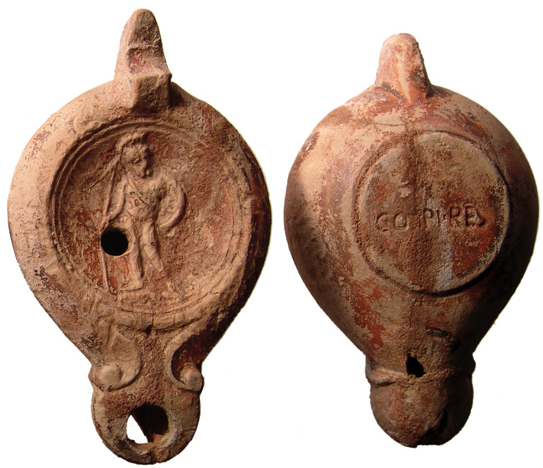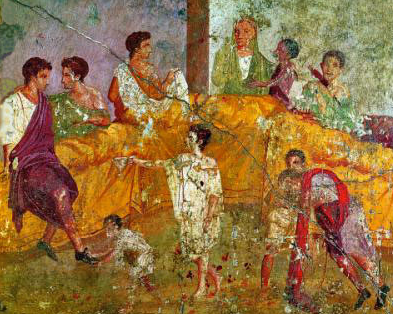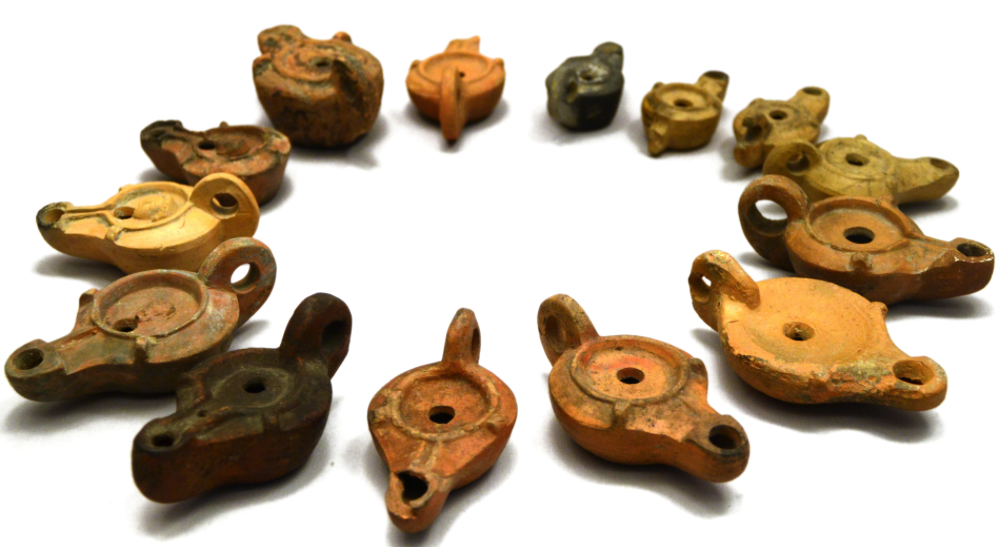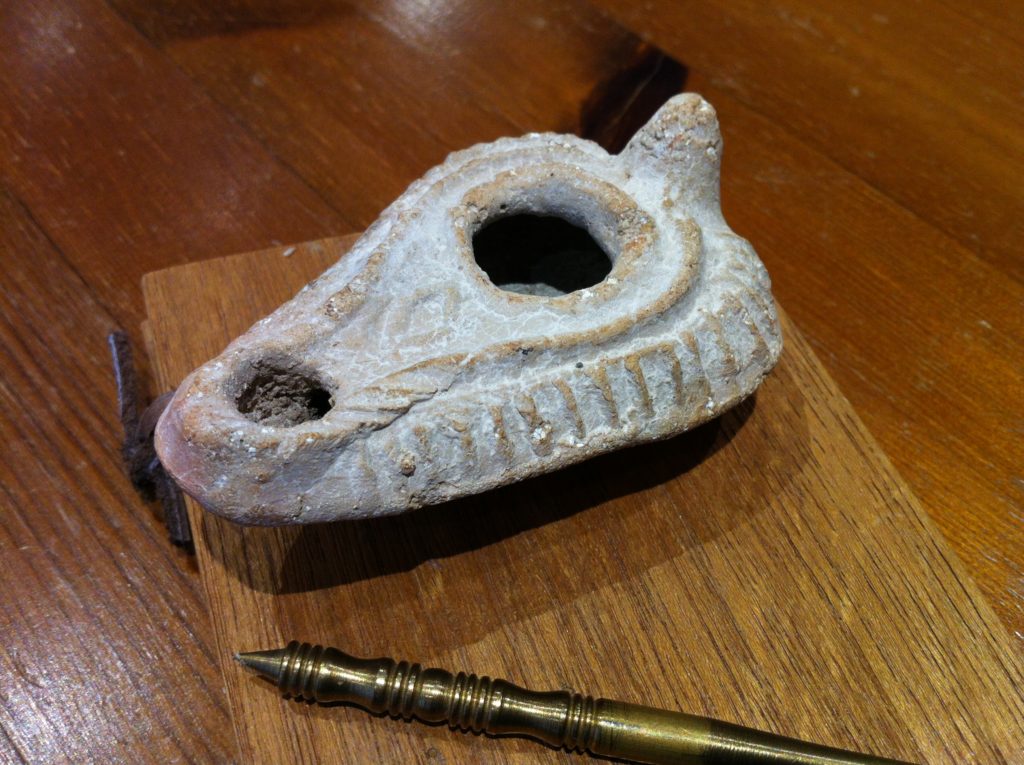Salvete, dear readers!
My power went out the other night, and I found myself in darkness for a time but for the cold blue light of my phone.
Oddly enough, this made me think of another Ancient Everyday to share with you!
Lighting is something that we certainly take for granted today. We flick a switch and voila, we have light! If we want add to the atmosphere of a dinner party, we light candles for ambiance.
But in the ancient world, it was quite different. No switches, no electricity running through the walls of every domus.
The Romans, and the Greeks before them, used oil lamps.
Today, when we shop for lighting, there are myriad choices for size, quality and the amount of ornamentation upon a lamp.
The same can be said of oil lamps in the ancient world!
Oil lamps made out of bronze or pottery were in use in the Mediterranean world from about the seventh century B.C., and continued as such for centuries. Most consisted of a chamber for the oil, a filling hole in the middle, and another hole in the nozzle for a linen wick. Some lamps even had a handle for ease of carrying.
Most oil lamps were made in two-piece molds that were made of gypsum (calcium sulphate) and plaster. When the lamp was removed from the mold, it was dipped in a slip of clay (kind of a thick liquid clay mixture) to further coat the lamp and make it more impermeable to oil.
You can see how the molding process works HERE.

A Roman volute lamp with a gladiator or warrior depicted on the body and the producer’s name on the bottom
The oil that was usually used in oil lamps was, of course, olive oil. After all, it was widely available in the Mediterranean world.
Lamps of the second and third centuries B.C. that were used by Romans in Italy were more often than not imported from Athens where there was a significant ceramic industry. However, from the first century B.C. oil lamps used by Romans were mostly produced in Italy itself, and then exported around the Empire. Later on, these were then often copied by local producers in places such as Britannia.
From the Augustan period onward in Italy, high-quality volute oil lamps were produced. These were wide and flat with room for more ornamentation or scenery depicted in the middle, and curved ornaments to either side of the nozzle(s).
In the northern provinces especially, the Roman firmalampe became quite common. It was more plain than the decorative volute lamps, and purely functional. The firmalampe was made across the Empire.
At one point in time in the northern part of the Empire, it’s believed that there was a disruption to the oil supply from the Mediterranean, and so oil lamp production in the northern provinces slowed to a standstill. Instead, candles made of tallow (beef and sheep fat), which the Romans had used to an extent since around 500 B.C., may have begun to replace oil lamps.
However, in the olive oil-producing regions of the Empire, oil lamps in countless different styles were still widely used to light the domus of many a Roman.
Thank you for reading.

A more ornate, double-nozzle, bronze oil lamp with stand and acanthus handle. Only the very best for these owners!




